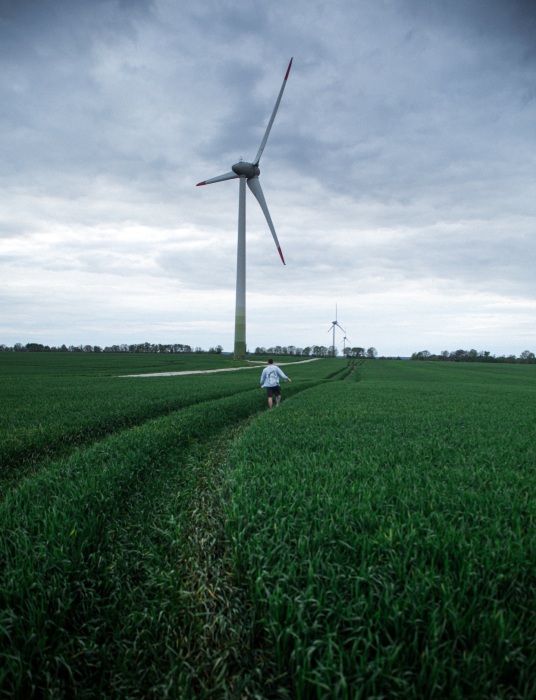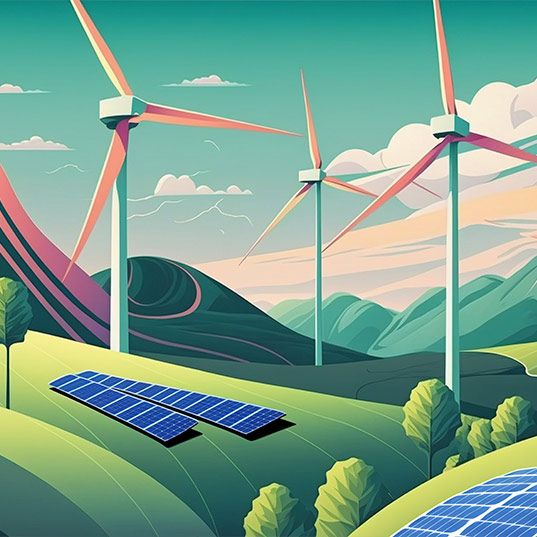Global Wind Day 2025: the energy driving change
On Global Wind Day, we explore how wind power has become a vital renewable source for advancing the energy transition. Discover how this natural resource contributes to the development of a cleaner, more sustainable future.
Every 15 June, we celebrate Global Wind Day, dedicated to recognizing the importance of this natural resource in our lives and its transformative role in sustainable development. From a gentle breeze to hurricane force, the wind is a renewable source of clean energy and crucial ally in the fight against climate change.
What will I learn from this article?
- Global Wind Day 2025: what is it and why is it held?
- The wind, shaping human history
- Wind energy in 2025: stats, challenges and opportunities
Global Wind Day 2025: why do we celebrate it?
If you had to make a Top 3 of the resources that have helped humans develop as a species from their early beginnings, there would surely be little doubt that the discovery of fire and the invention of the wheel would be two of them.
But you might more reluctant to put down the wind as one, maybe because it is a natural resource we didn’t have to discover or invent; it’s simply there exercising its activity before we could even walk.
Yet, the importance of the wind to human activities and its interaction with the planet’s biodiversity is more than vital. In this context, Global Wind Day has become an opportunity to highlight its role in the transformation of the energy model, its contribution to decarbonization and potential for creating jobs and sustainable growth.
The wind, shaping human history
What has the wind done for us? These are just some of its main contributions:
- Transporting seeds: the wind plays a vital role in the pollination of plant species via the process by which seeds are carried through the air. Dispersion allows biodiversity and regeneration of entire ecosystems, ensuring the survival of innumerable plant species and consequently the animals that depend on them.
- Moving clouds: wind is essential for giving continuity to the water cycle, moving clouds and facilitating the distribution of water through rainfall. This atmospheric movement ensures that arid regions receive humidity and water resources are distributed equitably, sustaining both agriculture and freshwater reserves.
- Operating windmills: for centuries, windmills were the economic basis of many agricultural communities. Used to mill grain, pump water and carry out other mechanical tasks, their invention led to the development wind turbine generators that today allow us to enjoy renewable electricity produced by the wind.
- Maritime navigation: the wind was key in the era of exploring and discovering the world. Without the capacity to capture and use this natural resource, the great maritime expeditions which opened new commercial routes and connections between continents would not have been possible. Galleons propelled by the wind rode the oceans and facilitated the exchange of ideas, cultures and merchandise that shaped the history of the world.
From ancient times, the wind has been a source of inspiration and utility for the human race. The first navigators ventured into the unknown by trusting in airstreams to drive their sails. Today, centuries later, we continue to trust this most elemental of forces, but from a modern and sustainable perspective that seeks to exploit its power without damaging the environment.
Wind power, vital for the energy transition
 In 2024, wind energy reached a new world record with the installation of 117 GW of additional capacity, consolidating it as one of the main sources of renewable energy.
In 2024, wind energy reached a new world record with the installation of 117 GW of additional capacity, consolidating it as one of the main sources of renewable energy.
This growth raised total wind power capacity worldwide to 1,136 GW, with 109 GW coming from onshore projects and 8 GW from offshore, in 55 countries.
This progress means that wind energy covers around 8.1% of world electricity demand, contributing significantly to the reduction of greenhouse gases.
As well as being one of the most competitive energy sources, wind power has become a motor of employment. According to the report, Global Wind Workforce Outlook 2024–2028, over 532,000 new technicians will be needed to satisfy the growing demand for onshore and offshore projects between now and 2028. Forty percent of these will be new professionals.
Despite these advances, the sector still has its challenges, such as the need to flexibilize licensing processes and improve infrastructure to integrate wind energy efficiently into electricity grids. In this context, global commitments like the one assumed in COP28, which seeks to triple renewable energy capacity by 2030, reaffirm that wind power is an essential tool for world climate action.
So, for Global Wind Day 2025, we want to reaffirm our commitment to a sustainable energy transition in which wind energy performs a vital role in the construction of a cleaner, fairer and more resilient future for everyone.
Sources:
- https://elpais.com/clima-y-medio-ambiente/2025-04-08/el-41-de-la-electricidad-mundial-se-genera-ya-con-fuentes-sin-emisiones-nueve-graficos-para-entender-la-transicion-energetica-global.html
- https://www.gwec.net/gwec-news/wind-industry-installs-record-capacity-in-2024-despite-policy-instability








